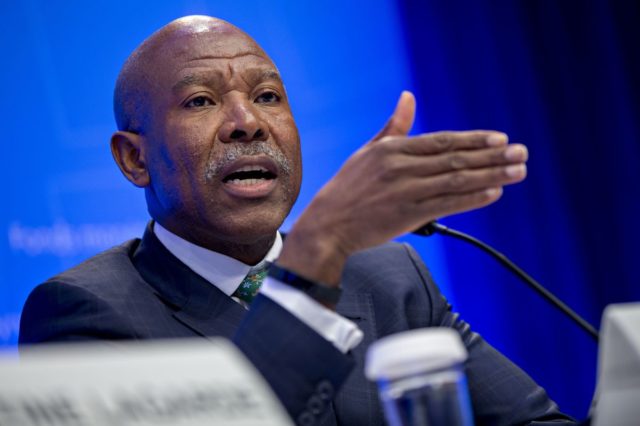What the latest interest rate decision means for future hikes, according to economists
The South African Reserve Bank’s (SARB) Monetary Policy Committee (MPC) on Thursday (27 January) raised the benchmark repurchase rate by 25 basis points to 4%.
This means that the prime lending rate of commercial banks will increase to 7.50%, and marks only the second interest rate hike in three years as inflation remains a huge concern – and despite the economy still recovering from the fourth wave of Covid-19 infections driven by the Omicron variant, said Adriaan Pask, chief investment officer at PSG Wealth.
Bloomberg reported that United States Federal Reserve chairman Jerome Powell fired the starting gun for potentially the biggest and fastest tightening of global monetary policy in years.
His hawkish shift included not ruling out US rate hikes at every meeting for the rest of 2022. Other central banks, including the Bank of England, are set to raise their own benchmarks over the next week, and more have indicated they will follow in the coming months, Bloomberg said.

With monetary guardians making clear the scale of their concern about inflation, the path has been laid for aggressive action.
“This tightening cycle will be different,” said Dario Perkins, an economist at TS Lombard in London. “The authorities may want to hike interest rates much quicker this time around.”
The last global cycle was shortly before the 2008 financial crisis, but this time it starts with economies already at full capacity and inflation way above target – setting up the prospect of the most rapid global rate hike cycle since the 1990s, Perkins said.
South Africa shift
Four out of five committee members voted in favour of the rate hike, while the GDP growth forecast was kept unchanged at 1.70% for 2022 and 1.80% for 2023. Officials also noted that the possibility of a faster normalisation of global policy rates poses a grave risk, said Pask.
He further noted that the bank revised its headline consumer price inflation forecasts to 4.90% for 2022, 4.50% for 2023 and 4.50% for 2024, unchanged from the previous meeting. “The upward revisions in these expectations came as Eskom plans to increase its prices by 20.50% in April 2022, following a 15% increase in 2021,” he said.
“The increase in interest rates was broadly in line with our expectations,” said Pask. “Especially after the case for a rate hike grew last week when inflation data for December 2022 came in higher than expected at 5.90%, close to the top of the bank’s 3%-6% target range”.
“However, we have previously communicated that should the MPC decide to raise borrowing costs to contain prices, the changes will most likely be small and gradual.”
Further hikes
Pask said that a 25 basis point hike every few months, will not be a shock for economic growth or the local market. “Market participants will continue to be sensitive to any developments relating to unemployment, wages, inflation, and interest rates, therefore investors should also expect heightened volatility over the next few months.”
Jeff Schultz, the senior economist at BNP Paribas South Africa, said that the Reserve Banks’ quarterly projection model (QPM) indicates something closer to its base case of five 25bp rate hikes in 2022 and three 25bp hikes in early 2023 – with its end 2022 and end 2023 implied policy rates at 4.91% and 5.84% respectively.
“Importantly too, a 50bp rate hike was not discussed, further solidifying that it will for the time being adopt a gradual normalization approach,” Schultz said.
Sanisha Packirisamy, an economist at Momentum Investments said that given the likely accelerated global interest rate path, local interest rate hikes are expected to be front-loaded to keep SA inflation expectations anchored.
“The SARB’s internal quarterly projection model (QPM) predicts interest rates will end 2022 at 4.9% (relative to our own estimates of 4.75%) and 5.84% by the end of 2023 – compared with our projection of 5.75%.”
Gradual normalisation
Reza Hendrickse, portfolio manager at PPS Investments said that the decision to increase rates reflects the committee’s view that there are upside risks to inflation, which for now is expected to be above the mid-point of the target band this year.
“These risks include the prospect of tighter financial conditions globally, in response to what could be enduring inflationary pressures. In addition, oil prices are rising steadily, alongside elevated electricity and administered prices locally.”
The SARB once again revised its GDP growth forecast for 2021 downwards, from 5.2% to 4.8%, with better than expected fourth-quarter growth having been more than offset by worse than expected third-quarter growth.
“Going forward, growth is expected to decelerate to 1.7% this year which, although subdued, is in fact above our potential growth rate of 0.8%, according to SARB estimates,” said Hendrickse.
“Looking ahead, we anticipate that further interest rate hikes will be forthcoming, and the Reserve Bank’s quarterly projection model projects this normalisation to occur through to 2024.
“Although the path of rates is expected to be a gradual one higher, the spotlight will no doubt be on the US, where current market concerns are that the US Federal Reserve is potentially behind the curve.”
Absa economists said that the future pace of normalisation will be much more gradual than what the market is currently pricing in.
“We expect another 50bp of tightening this year and 75bp in 2023. We have loosely pencilled in the idea that these normalisation hikes will come at alternate meetings, and so, for now, we have the next one pencilled in for May.
“But we believe that the risks are tilted in the direction of front loading of these hikes, depending on how the data come out and how the rand trades in the coming months. The market reaction to the 2022 Budget due on 23 February could also prove key,” Absa said.
Read: South African Reserve Bank hikes rates




